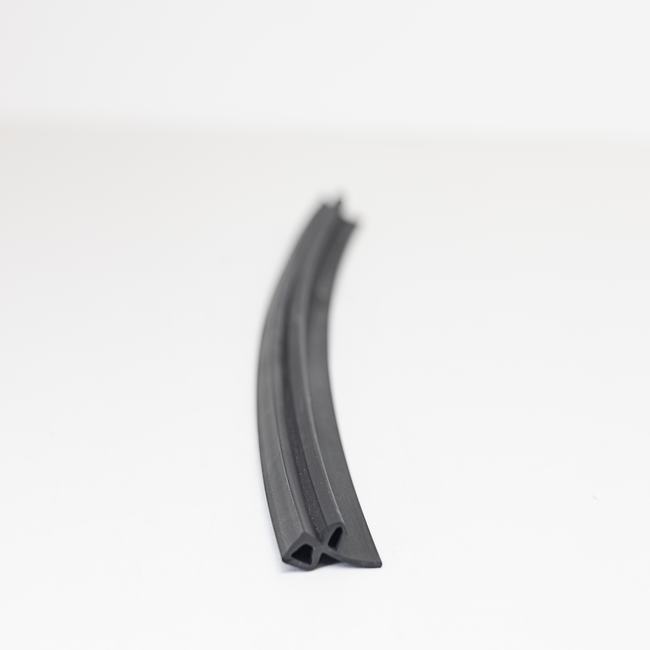Steel door seals, often referred to as door weatherstripping or door gaskets, are essential components used to seal the gaps and spaces around steel doors, ensuring that they provide effective insulation, security, and protection from external elements. These seals come in various forms and materials, and they play a crucial role in maintaining the integrity and functionality of steel doors. In this extensive description, we will explore steel door seals in detail, including their types, functions, materials, installation methods, and applications.
Types of Steel Door Seals:
- Magnetic Door Seals: These seals utilize magnets to create a strong, airtight seal when the door is closed. They are often used in residential and commercial applications to prevent drafts, enhance energy efficiency, and provide sound insulation.
- Compression Door Seals: Compression seals are made of resilient materials like neoprene or silicone, which compress to form a tight seal when the door is closed. They are effective at preventing air infiltration and providing weather resistance.
- Bulb and Kerf Door Seals: Bulb and kerf seals feature a flexible bulb or kerf-shaped gasket that fits into a corresponding slot or groove on the door jamb or frame. When the door is closed, the bulb or kerf compresses to create a seal, offering both thermal and sound insulation.
- Sweeps and Thresholds: Door sweeps are typically installed at the bottom of the door to seal the gap between the door and the threshold. They are essential for preventing drafts, dust, and insects from entering, as well as for retaining heat or cool air inside.
- Automatic Door Bottoms: These specialized door seals are fitted at the bottom of the door and drop down automatically when the door is closed, creating a complete seal against drafts, moisture, and sound.
- Adhesive-backed Seals: These seals come in various forms, such as foam tape, felt strips, or adhesive-backed weatherstripping. They are easy to install and are used for sealing gaps around the door perimeter, providing both insulation and protection.
Functions of Steel Door Seals:
- Weather Protection: Steel door seals are primarily designed to protect the interior of a building from external weather conditions. They prevent water, air, and debris from infiltrating, keeping the interior dry and comfortable.
- Energy Efficiency: One of the key functions of door seals is to improve energy efficiency. They create a thermal barrier, preventing heat loss in cold weather and heat gain in hot weather. This can lead to significant energy cost savings.
- Sound Insulation: Door seals help reduce noise transmission between rooms or from the outside environment, making them important for maintaining a quiet and peaceful indoor atmosphere.
- Security: Well-sealed doors enhance security by preventing unauthorized access and making it more difficult for intruders to tamper with the door.
- Privacy: In settings where privacy is essential, such as in residential homes or hotel rooms, door seals ensure that occupants are not disturbed by outside noise or disturbances.
- Insect and Pest Prevention: Door seals also act as a barrier against insects and pests, helping to maintain a pest-free environment.
Materials and Durability:
Steel door seals are manufactured from a variety of materials, including rubber, neoprene, silicone, vinyl, foam, felt, and metal. The choice of material depends on the specific application and the desired properties. For example, neoprene and silicone are known for their durability and resistance to extreme temperatures, while foam and felt seals are more cost-effective options for basic insulation needs.
The durability of door seals is essential, as they are subject to constant wear and tear. High-quality seals should be able to withstand repeated opening and closing of the door, exposure to varying weather conditions, and resist degradation over time.
Installation:
The installation of steel door seals requires careful attention to detail to ensure their effectiveness. It typically involves cleaning the door and frame surfaces, measuring and cutting the seal to the appropriate length, and securing it in place using screws, adhesive backing, or a combination of both. Proper alignment and compression are crucial for achieving a tight seal.
Applications of Steel Door Seals:
- Residential Doors: Steel door seals are commonly used in residential applications to seal entry doors, garage doors, and interior doors, providing insulation and weather protection.
- Commercial Buildings: They are used in commercial buildings, offices, and retail spaces to enhance energy efficiency, soundproofing, and security.
- Industrial Facilities: Industrial environments often require heavy-duty door seals to withstand harsh conditions and maintain controlled temperatures.
- Hospitals and Healthcare Facilities: Door seals are used in healthcare settings to maintain sanitary conditions and control airflow.
- Hotels: In the hospitality industry, door seals contribute to guest comfort and privacy by reducing noise and improving insulation.
- Aircraft Hangars: Large steel doors in aircraft hangars use specialized seals to protect against weather, dust, and sound.
In conclusion, steel door seals are indispensable components for ensuring the functionality, security, and comfort of steel doors in various applications. Their diverse types, functions, and materials make them versatile solutions for maintaining insulation, weather protection, soundproofing, and security in both residential and commercial settings. Proper installation and regular maintenance are essential for maximizing their effectiveness and durability.

